Travel
Flight attendant reveals ‘elbow rest’ rule when sitting in the middle seat

A FLIGHT attendant has revealed the ‘elbow rest’ rule that passengers need to know when flying, especially if you’re caught in the middle seat.
From reclining to shoulder surfing, many have their own grievances and pet-peeves when it comes to sitting next to a stranger when travelling to their destination.
Around half of UK households fly once a year with videos on social media regularly going viral across the globe when tensions flare on-board an aircraft.
The latest information from a former flight attendant revealed the long list of bugbears that can be just as frustrating for cabin crew, with one particular issue always causing a stir.
According to Charmaine Davies the question of whether to recline or not often leads to impatience from those seated behind.
Prof Jim Salzman of the University of California, Los Angeles, described how crammed airlines combined with passengers hoping to take up more space results in the inevitable.
He told the BBC: “[The airlines] are able to pass on the anger and frustration of cramped seating to passengers who blame each other for bad behaviour instead of the airlines who created the problem in the first place.”
On the topic of space, another common gripe was armrest hogging, particularly for those caught in the middle.
One flight attendant for a major US airline explained how she often ends up sitting between “two guys with both their arms on armrests” when she doesn’t get to opt for a specific seat.
She said: “I wait until they reach for a drink and take the armrest. One [guy] kept trying to push my arm, and I just had to give him a look: ‘We’re not doing that today.’”
According to a 2023 Skyscanner survey, nearly a third of UK passengers found those taking up armrest space annoying.
The debate of which seat earns top spot – window or aisle – has long been a discussion.
Yet, no matter which one you prefer problems can escalate when your seated neighbour needs to go to the toilet.
With over half of Americans suggesting that climbing over someone to use the restroom on a plane was unacceptable, others may be at a loss of what to do when someone has fallen asleep.
A former flight attendant for Virgin Atlantic, Zoe, raised the issue of how alcohol consumption can heighten the need to head to the loo.
She described a flight bound for Ibiza with a number of passengers having a drink to hand.
This meant that as soon as the seatbelt sign was switched off, “everybody stood up” and some even got “quite aggressive”.
Eventually, they were forced to ask everyone to sit back down with one passenger having “a wee in a carrier bag” as he was unable to wait.
On a similar note, many find a grievance with passengers choosing to stand up just as the plane has landed.
Especially with the ground crew often needing to hook up the passenger boarding bridge or stairs which can take a few minutes.
The list goes on with people using mobiles without headphones, draping hair over the back of a seat, removing shoes or just being generally inconsiderate.
William Hanson, an etiquette coach, advised: “If you don’t want to temper your behaviour to get along with other people then there’s something wrong with you, to be blunt.”
Worst passengers to have to deal with
A flight attendant has revealed the worst passengers to deal with on flights, here’s what she said:
Drunk passengers
“People who make the most of the booze on board are really irritating. We have a lot to think about on our flights as it is, without looking after people who have drunk themselves into a stupor.
“My advice for passengers is to enjoy the included booze, in moderation.
“If there’s an emergency and you’re hammered, you’re going to be no use to anybody, least of all yourself. So it’s best to stay alert.”
Vapers
“Vaping on board is becoming more popular and it’s ridiculous that people think they can get away with it.
“The big plume of fruity smoke is always a bit of a giveaway.
“But it can also cause panic in the rest of the cabin as well – imagine seeing a big smokey cloud in a plane? It’s definitely not something you’re expecting, so will definitely leave people feeling a little frightened.”
Listening to music without headphones
“There’s few things worse than tinny phone music blaring out through the plane cabin, or an episode of Breaking Bad being broadcast from one passenger to the people around them.
“The thing I always tell people to remember is that there are other people on board the plane and they aren’t all travelling for the same reason.
“So keep your music and TV to yourself and just think long and hard about whether the other people on board want to listen to your awful dance music.”
Travel
Northern seaside town nicknamed the ‘Lakeland Riviera’ thanks to its warm microclimate
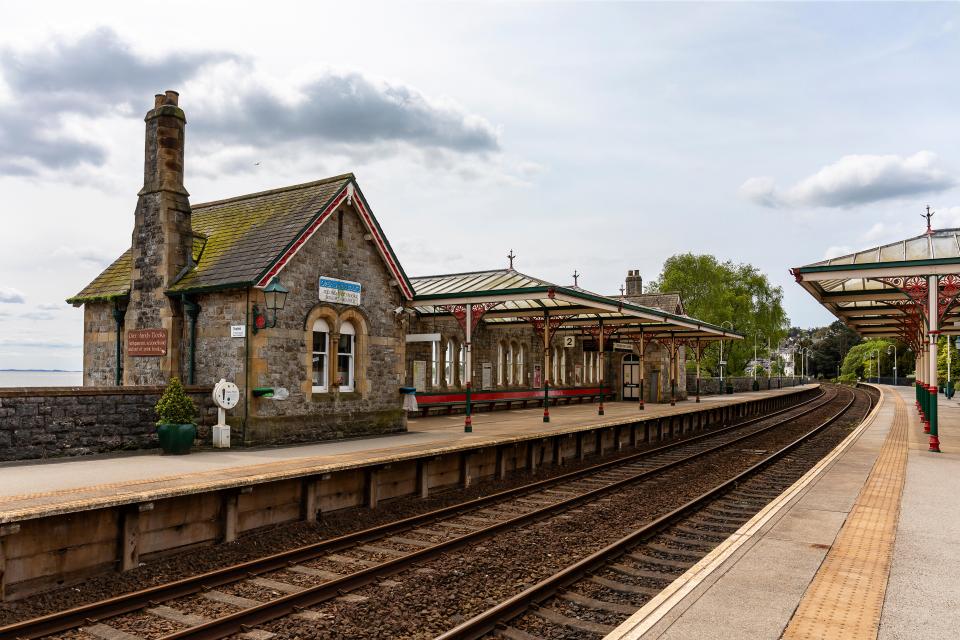
THE charming seaside town of Grange-over-Sands has been attracting holidaymakers for 175 years.
Located on the north side of Morecambe Bay in Cumbria, Grange-over-Sands benefits from its own microclimate, making it slightly warmer than other nearby tourist destinations.
Grange-over-Sands has this microclimate to thank for its moniker as the “Lakeland Riviera”.
The seaside town was a fashionable seaside resort town in the 19th century thanks to its pleasant temperatures and the arrival of the railroad in the 1850s.
Steeped in charm with promenade walks, lush gardens and sweeping views over Morecambe Bay, Grange-over-Sands is an ideal autumn break for Brits.
One of the main attractions in the town is its Ornamental Gardens, which has been affectionately nicknamed the “Duck Pond” by locals.
Constructed on an area of marshland that was cut off from the shore when the railway was built in the 1800s, the pond is fed by a stream that gives the pond a constant flow of water, meaning it never runs dry.
The pond also has a fountain and several paths and benches surround the pond.
Another popular attraction in the English town is the Promenade Walk – a level walkway along the edge of Morecambe Bay.
A playground is located on the southern end of the promenade equipped with swings, a slide and a climbing frame.
Despite being set on the coast, Grange-over-Sands doesn’t technically have a beach.
However, it is home to a saltmarsh that’s part of nearby Morecambe Bay.
Why does Grange-over-Sands have a microclimate?
THE microclimate in Grange-over-Sands is milder and sunnier than the rest of the Lake District.
Grange-over-Sands has a microclimate because of its location on the edge of the Lake District and the coast.
Factors such as the Gulf Stream, the nearby mountains and its south-facing position also contribute to its slightly warmer temperatures.
There are plenty of other things to do just outside Grange-over-Sands like a visit to Holker Hall and Garden – an award-winning stately home with beautiful gardens, woodland walks and a deer park.
Cartmel Village is known for its famous sticky toffee pudding and it’s also a short drive away from Grange-over-Sands.
Other neighbouring attractions include The Lakeland Motor Museum, Yewbarrow House Garden and Sizergh Castle and Garden.
For visitors who want to stay overnight there’s The Commodore Inn – a pub and restaurant with six en-suite rooms.
There are several restaurants in Grange-over-Sands like Thyme Out Coffee House & Restaurant, The Estuary Bistro and the Akhi indian restaurant.
Grange-over-Sands is a 35-minute drive from Morecambe, and it’s a 26-minute drive from Kendal.
Direct trains operate from Grange-over-Sands to Manchester Airport and Lancaster.
While you’re there….
If you’re paying a visit to Grange-Over-Sands, it’s also worth checking out the charming town of Ambleside, which features England‘s best restaurant – The Old Stamp House.
At the AA‘s 2023 Hospitality Awards, the Lake District dining room was named England’s Restaurant of the Year and got a 3 Rosette Award for Culinary Excellence.
Ambleside’s dining options may be fancy, but its outdoors are rugged and adventurous.
Included in that are the two waterfalls, Stock Ghyll Force and Rydal Falls.
The former is just a short walk from the town centre, where it drops 70ft into a plunge pool before continuing on its journey downstream into Lake Windermere.
The lake is the largest in England and is surrounded by mountain peaks and villages, with Ambleside sitting to the north.
For those who aren’t so keen on getting wet, the likes of Wray Castle offer dry options.
The National Trust-owned gothic revival castle sits on the shores of Lake Windermere and has turrets, towers, informal grounds and miles of lakeshore paths.
The Trust say it offers church-like interiors and panoramic Lake District views.
It also played an important part in UK literary history, as it’s where Beatrix Potter holidayed in the Lakes for the first time as a child.
Three little-known attractions to visit in the Lake District
HERE are three little-known places to visit in the Lake District.
Rydal Cave
Located near Rydal Water, this man-made cavern was originally a quarry. However, it’s now a serene and somewhat mystical place to explore. The cave is large enough to walk into and features a small pond inside, adding to its enchanting atmosphere.
St. Catherine’s Church, Boot
Nestled in the picturesque Eskdale Valley, St. Catherine’s Church is a charming, isolated, church with a peaceful riverside setting.
Muncaster Castle Gardens and Hawk & Owl Centre
While Muncaster Castle itself is relatively well-known, the extensive gardens and the Hawk & Owl Centre often don’t get the attention they deserve. The gardens cover 77 acres and feature a range of beautiful plants, including rhododendrons and azaleas. The Hawk & Owl Centre offers daily flying displays and the opportunity to learn about various birds of prey in a stunning setting.
A UK city has recently been praised for having the friendliest people in the country.
And an amazing train route offers some of the best views in the UK.
Travel
The £2.99 item that doctors swear by to avoid ‘intense pain’ during long flights

DOCTORS have urged passengers to pick up a simple £2.99 item to avoid pain during flights.
Many flyers can experience sinus pain when on a flight – caused by changes in pressure.
This is caused aerosinusitis and, unlike “aeroplane ear“, which can be solved by popping your ears, it doesn’t have an easy fix.
However, doctors say that simple congestion relief medicine can do the trick – which can be picked up for as little as £2.99.
Dr Richard Lebowitz, an ear, nose, and throat (ENT) doctor at NYU Langone Medical Center, told the Thrillist website: “The sinuses are air-filled spaces – that is, empty spaces – in the bones of your face, and they have little openings in them, so they can equalize pressure.
“They’re normally just always open, but they can get blocked from swelling or inflammation of the sinus lining.”
Dr Richard explained that this could cause intense pain for flyers.
He said: “The sinus needs to equalize pressure, too. But there’s no way for it to do it, so it just keeps getting worse and worse over the course of that descent. It can be really excruciating at times.”
Moving on to the simple treatment, Dr Richard said: “You can try to reduce the swelling of the membranes that can block the opening, so that would mean using the same things you’d use if you have this problem with your ears – Rin and Sudafed.”
He added that in extreme cases, doctors may prescribe oral steroids for inflammation – and in even more extreme cases, a surgical procedure can be undertaken.
He said: “It’s very easy to fix the problem if you’re someone who has this regularly and flies a lot or professionally.
“You have to open up those sinus drainage halfway surgically. Once you do that, the problem goes away.”
Aerosinusitis can be extremely uncomfortable for some passengers.
Erica Klauber, 39, recalled experiencing severe pain and even fearing she was having an aneurysm while on a business trip in 2013.
She said: “I remember looking at the guy next to me.
“I was like, ‘Should I reach out and tell him? Do I have the faculties to tell him that this is it?’”
However Dr Richard reassured travellers that as painful as may feel, aerosinusitis is “not really a big deal”, adding: “Once the pain has resolved, the problem is resolved.”
He added that while many patients fear their heads might explode, “that isn’t a real thing. Your sinus cannot explode or implode. It just hurts a lot.”
What is sinusitis?
Symptoms of sinusitis:
- Pain, swelling and tenderness around your cheeks, eyes or forehead
- Blocked or runny nose
- Reduced sense of smell
- Green or yellow mucus from your nose
- High temperature
- Headache
- Toothache
- Bad breath
- Cough
- Feeling of pressure in the ears
Treatments for sinusitis:
- Getting plenty of rest
- Drinking plenty of fluids
- Taking painkillers, such as paracetamol or ibuprofen (do not give aspirin to children under 16)
- Avoiding things that trigger your allergies
- Not smoking
- Cleaning your nose with a salt water solution
- Decongestant nasal sprays or drops
- Salt water nasal sprays or solutions to rinse out the inside of your nose
Source: NHS
Travel
Largely untouched Italian island with red sand beaches and hidden coves
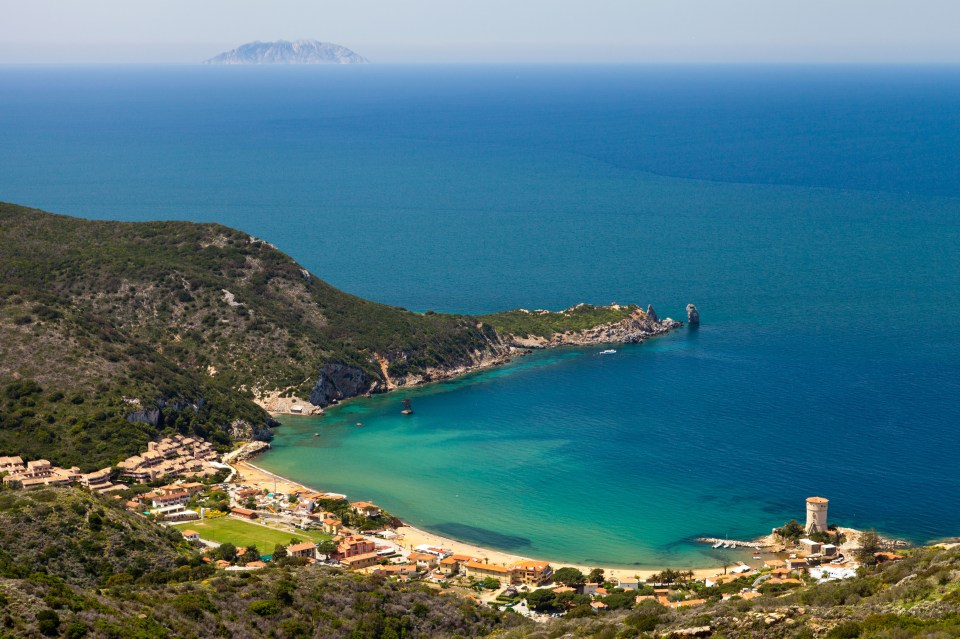
THE Italian island of Giglio is home to wide sandy beaches and hidden coves, and it remains largely untouched by hordes of holidaymakers.
Set in the Tyrrhenian Sea, Giglio is just one of the seven major islands that form part of the Tuscan Archipelago.
The string of seven islands, which include the more commonly known Elba, were said to have been formed by the scattered pearls of the goddess Venus’s necklace.
Covering just nine square miles, Giglio is home to just 1,100 residents.
While this number swells somewhat in the summer months, the Italian island remains largely untouched by British holidaymakers.
Home to the island’s ferry port, Giglio Porto is the main town on the island.
The harbour is backed by a string colourful houses where the majority of the island’s residents live.
From Giglio Porto, day-trippers can rent a small motorboat, which means they can explore hidden coves that aren’t reachable from land.
There are also several scuba dive centres located in Giglio Potro where scuba divers can hire equipment and book onto underwater tours, to explore shipwrecks, sea caves and coral walls in the waters surrounding Giglio Porto.
Other towns on the island include Giglio Castello and Giglio Campese.
Located on the top of a hill, Giglio Castello is an ancient medieval village that’s home to formidable city walls and winding cobblestone streets.
Meanwhile, Giglio Campese is home to Giglio Campese Beach, the largest beach on the island.
The dark red sand is the most tourist-focused spot on the island, with visitors able to rent out sunloungers and parasols.
Other beaches on the island include Cannelle Beach, which has fine white sand and crystal-clear waters and Caldane Beach, one of the smallest beaches on the island.
Visitors can reach Giglio on a direct ferry service from Porto Santo Stefano on the Tuscan mainland.
Ferry journeys take roughly one hour with tickets starting from £11 per person.
And there are plenty of other secluded spots in Italy only locals seem to know about, including Ponza.
Ponza
Ponza is part of the Pontine archipelago in the Tyrrhenian Sea, and it is home to beaches that rival Capri — but for a fraction of the price.
One of the more rustic Italian islands, with its untouched natural landscapes, hidden coves and sea caves.
To get there, you can hop on a train from Rome’s main station, Termini, to the port city of Anzio. The journey takes just over an hour and costs around £5.
Three other little-known islands to visit in Italy
THERE are plenty of little-known islands dotted around the Italian coast, many of which are unknown to Brit holidaymakers.
Pantelleria
Situated between Sicily and Tunisia, Pantelleria is often referred to as the “Black Pearl of the Mediterranean” because of its volcanic origins.
Isola di San Pietro
Just off the southwestern coast of Sardinia, Isola di San Pietro is part of the Sulcis Archipelago. The island is known for its picturesque harbour town, Carloforte. Visitors can enjoy beautiful beaches and a vibrant local culture.
Isola di Capraia
Located in the Tuscan Archipelago, Capraia is a small, rugged island known for its wild beauty and unspoilt nature. It’s the third-largest island in the archipelago but remains relatively untouched by mass tourism.
Meanwhile, here are the 100 best beaches in the world to visit in 2024 – and four from the UK have made the cut.
And one tiny UK town has been compared to a stunning Italian island.
Travel
Historic English market town that sounds like something from a fairytale – with huge castle and a very scenic train line
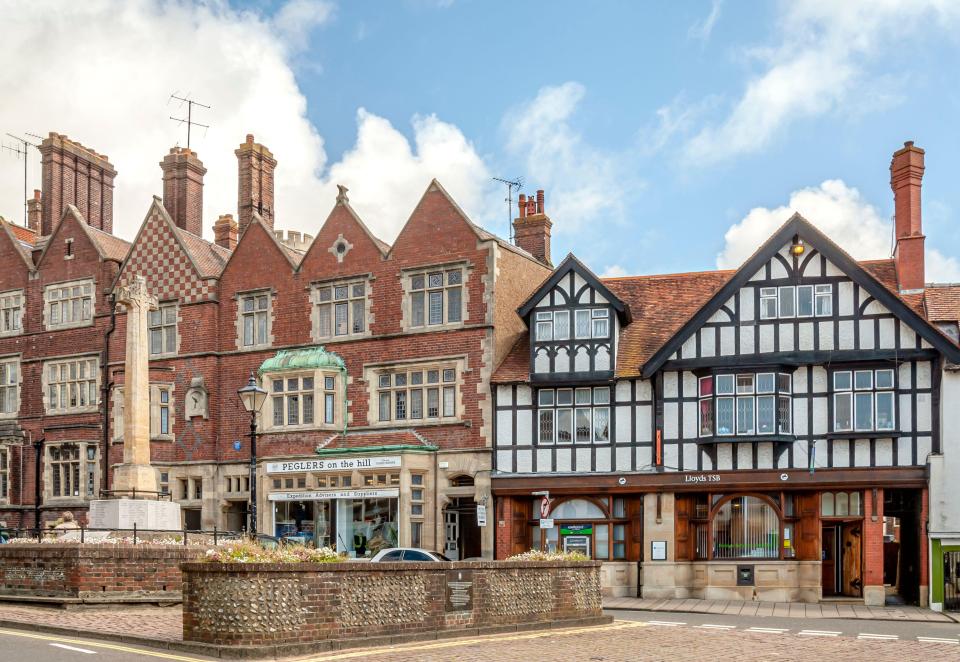
ARUNDEL is an historic market town in West Sussex that’s home to an 950-year-old castle, riverside pubs and independent shops and boutiques.
And while we know that the fictional town in the Disney movie Frozen was inspired by the Austrian town of Hallstatt.. we’re going to go out on a limb and say there are an awful lot of similarities with this southern English location.
For starters, Arendelle – the town in Frozen – sunds an awful lot like Arundel.
Secondly, the big focal point of Arundel is the imposing castle, much like in Frozen, where the castle is the home of the princesses Elsa and Anna.
Built by Roger de Montgomery in 1067, Arundel Castle is the historic home of the Duke of Norfolk, with it being occupied by that family line for more than 850 years
The castle is currently home to Edward William Fitzalan-Howard, 18th Duke of Norfolk and his wife Francesca Herbet.
Despite being a family home of the Duke of Norfolk, Arundel Castle has been the backdrop for huge blockbuster films like 2017’s Wonder Woman, starring Gal Gadot.
Helen Mirren also filmed the Madness of King George alongside Nigel Hawthorne in Arundel Castle.
Arundel Castle is open to the public, with the historic building being named the Historic Park & Garden of the Year in 2024.
Visitors can explore rooms like the Regency Library, the Baron’s Hall, the Drawing Room and several Victorian and Edwardian bedrooms.
There are also plenty of buildings located within the grounds of the castle, including Fitzalan Chapel, a Gatehouse and a Chapel.
Events also take place at Arundel Castle throughout the year like the Household Cavalry Exhibition, which showcases twelve large-scale portraits of the Household Cavalry by the photographic artist Ripley
Jousting shows and walking tours will take place throughout the castle in October.
Entry tickets to Arundel Castle cost £29 for a full-paying adult and £12 for children, with family tickets coming in at £70.
You can also get an excellent view of the castle if you choose to take the train to the town’s station, Arundel Castle.
The Arun Valley railway line runs right past the foot of the grounds.
There are plenty of other tourist attractions in the historic market, including Arundel Cathedral.
The Gothic cathedral is free to visit, with one of its most beautiful features considered to be the rose window that sits directly behind the organ gallery.
Arundel Town Centre is packed with independent shops like Kim’s Bookshop, Lavender House, and the Tea and Biscuit Club.
Another attraction is Arundel Lido, which has two outdoor swimming pools.
While the pools are heated from April to September, they become cold water swimming spots throughout the winter when the heat is turned off in the colder months.
Because Arundel is backed by the South Downs National Park, walking routes and hiking trails are another popular pastime in the area.
One of those is the five-kilometre walk around Swanbourne Lake, which takes visitors past Hiorne Tower and back into Arundel Town Centre.
There’s also Arundel Park Walk that stretches for nine kilometres passing places like Monarch’s Way, the village of South Stoke and the River Arun.
Arundel isn’t short on pubs, with The Black Rabbit Pub highly-rated.
The riverside boozer offers views across the Wetlands towards Arundel Castle and serves a range of traditional grub like Sunday Roasts.
Other pubs in Arundel include the Lamb Inn, the Red Lion and the Kings Arms.
Holidaymakers can book to stay overnight at the Norfolk Arms Hotel, a Georgian Coaching Inn was built over 200 years ago by the 10th Duke of Norfolk.
Stays start from £70 per person per room, based on two people sharing a room.
Arundel is an hour’s drive from Brighton.
Three fascinating castles to visit in the UK
THE UK is home to some amazing castles – here are some of the best:
Bamburgh Castle
This medieval fortress is built overlooking the stunning Northumberland coast, offering a wonderfully picturesque place to explore some of England’s history.
The castle itself is incredibly well preserved and dates all the way back to the 11th century.
Kenilworth Castle
Brits can find out about sieges and royal scandals at Kenilworth Castle, one of the most famous forts in the country.
The medieval castle has had a fascinating history and was even transformed into an Elizabethan palace.
Today its keep, its Tudor towers and Elizabethan garden are among the sites people can explore.
Edinburgh Castle
Dominating the skyline of the Scottish capital, Edinburgh Castle has been dubbed “defender of the nation” by locals.
Today, the castle is still an active military base, with the Royal Edinburgh Military Tattoo remaining a highlight among visitors.
It’s also home to Scotland’s Crown Jewels as well as other national treasures.
Earlier this month, we revealed our favourite towns and villages to visit across the UK.
Another tiny village in the UK has been compared to a retro 1940s film set.
Travel
The Standard, Singapore to open next month
The 143-room hotel is situated on Orange Grove Road and will feature an outdoor swimming pool and Japanese-inspired restaurant Kaya at The Standard
Continue reading The Standard, Singapore to open next month at Business Traveller.
Travel
Hark Rock to open first Maltese hotel
The 394-room property will form part of a wider development in St George’s Bay which will offer 12 restaurants and bars, a shopping mall and a beach lido
Continue reading Hark Rock to open first Maltese hotel at Business Traveller.
-

 Womens Workouts2 weeks ago
Womens Workouts2 weeks ago3 Day Full Body Women’s Dumbbell Only Workout
-

 Science & Environment3 weeks ago
Science & Environment3 weeks agoHow to unsnarl a tangle of threads, according to physics
-

 Science & Environment2 weeks ago
Science & Environment2 weeks agoHyperelastic gel is one of the stretchiest materials known to science
-

 Technology3 weeks ago
Technology3 weeks agoWould-be reality TV contestants ‘not looking real’
-

 Science & Environment2 weeks ago
Science & Environment2 weeks ago‘Running of the bulls’ festival crowds move like charged particles
-

 Science & Environment3 weeks ago
Science & Environment3 weeks agoMaxwell’s demon charges quantum batteries inside of a quantum computer
-

 News2 weeks ago
News2 weeks agoOur millionaire neighbour blocks us from using public footpath & screams at us in street.. it’s like living in a WARZONE – WordupNews
-

 Science & Environment3 weeks ago
Science & Environment3 weeks agoHow to wrap your mind around the real multiverse
-

 Science & Environment2 weeks ago
Science & Environment2 weeks agoSunlight-trapping device can generate temperatures over 1000°C
-

 Science & Environment3 weeks ago
Science & Environment3 weeks agoLiquid crystals could improve quantum communication devices
-

 Science & Environment2 weeks ago
Science & Environment2 weeks agoQuantum ‘supersolid’ matter stirred using magnets
-

 Science & Environment3 weeks ago
Science & Environment3 weeks agoITER: Is the world’s biggest fusion experiment dead after new delay to 2035?
-

 Science & Environment2 weeks ago
Science & Environment2 weeks agoPhysicists are grappling with their own reproducibility crisis
-

 Science & Environment2 weeks ago
Science & Environment2 weeks agoQuantum forces used to automatically assemble tiny device
-
News3 weeks ago
the pick of new debut fiction
-

 Science & Environment3 weeks ago
Science & Environment3 weeks agoWhy this is a golden age for life to thrive across the universe
-

 News3 weeks ago
News3 weeks agoYou’re a Hypocrite, And So Am I
-

 Sport2 weeks ago
Sport2 weeks agoJoshua vs Dubois: Chris Eubank Jr says ‘AJ’ could beat Tyson Fury and any other heavyweight in the world
-

 Science & Environment3 weeks ago
Science & Environment3 weeks agoCaroline Ellison aims to duck prison sentence for role in FTX collapse
-

 Science & Environment3 weeks ago
Science & Environment3 weeks agoTime travel sci-fi novel is a rip-roaringly good thought experiment
-

 Science & Environment3 weeks ago
Science & Environment3 weeks agoLaser helps turn an electron into a coil of mass and charge
-

 Science & Environment2 weeks ago
Science & Environment2 weeks agoNuclear fusion experiment overcomes two key operating hurdles
-

 Technology1 week ago
Technology1 week ago‘From a toaster to a server’: UK startup promises 5x ‘speed up without changing a line of code’ as it plans to take on Nvidia, AMD in the generative AI battlefield
-

 Football1 week ago
Football1 week agoFootball Focus: Martin Keown on Liverpool’s Alisson Becker
-

 Science & Environment2 weeks ago
Science & Environment2 weeks agoRethinking space and time could let us do away with dark matter
-

 Science & Environment3 weeks ago
Science & Environment3 weeks agoNerve fibres in the brain could generate quantum entanglement
-

 MMA1 week ago
MMA1 week agoConor McGregor challenges ‘woeful’ Belal Muhammad, tells Ilia Topuria it’s ‘on sight’
-
Business1 week ago
Eurosceptic Andrej Babiš eyes return to power in Czech Republic
-

 News3 weeks ago
News3 weeks ago▶️ Hamas in the West Bank: Rising Support and Deadly Attacks You Might Not Know About
-

 Science & Environment2 weeks ago
Science & Environment2 weeks agoFuture of fusion: How the UK’s JET reactor paved the way for ITER
-
Business1 week ago
Should London’s tax exiles head for Spain, Italy . . . or Wales?
-

 News2 weeks ago
News2 weeks agoIsrael strikes Lebanese targets as Hizbollah chief warns of ‘red lines’ crossed
-

 Science & Environment2 weeks ago
Science & Environment2 weeks agoA new kind of experiment at the Large Hadron Collider could unravel quantum reality
-

 News3 weeks ago
News3 weeks ago▶️ Media Bias: How They Spin Attack on Hezbollah and Ignore the Reality
-

 News3 weeks ago
News3 weeks agoNew investigation ordered into ‘doorstep murder’ of Alistair Wilson
-

 Science & Environment2 weeks ago
Science & Environment2 weeks agoUK spurns European invitation to join ITER nuclear fusion project
-

 CryptoCurrency2 weeks ago
CryptoCurrency2 weeks agoCardano founder to meet Argentina president Javier Milei
-

 Science & Environment2 weeks ago
Science & Environment2 weeks agoMeet the world's first female male model | 7.30
-

 Science & Environment2 weeks ago
Science & Environment2 weeks agoX-rays reveal half-billion-year-old insect ancestor
-

 Science & Environment3 weeks ago
Science & Environment3 weeks agoA slight curve helps rocks make the biggest splash
-
Business3 weeks ago
JPMorgan in talks to take over Apple credit card from Goldman Sachs
-

 CryptoCurrency2 weeks ago
CryptoCurrency2 weeks agoBitcoin bulls target $64K BTC price hurdle as US stocks eye new record
-

 Womens Workouts2 weeks ago
Womens Workouts2 weeks agoBest Exercises if You Want to Build a Great Physique
-

 News2 weeks ago
News2 weeks agoWhy Is Everyone Excited About These Smart Insoles?
-

 News2 weeks ago
News2 weeks agoFour dead & 18 injured in horror mass shooting with victims ‘caught in crossfire’ as cops hunt multiple gunmen
-

 Technology2 weeks ago
Technology2 weeks agoRobo-tuna reveals how foldable fins help the speedy fish manoeuvre
-

 CryptoCurrency2 weeks ago
CryptoCurrency2 weeks agoEthereum is a 'contrarian bet' into 2025, says Bitwise exec
-

 Health & fitness3 weeks ago
Health & fitness3 weeks agoThe secret to a six pack – and how to keep your washboard abs in 2022
-

 Science & Environment3 weeks ago
Science & Environment3 weeks agoQuantum time travel: The experiment to ‘send a particle into the past’
-

 Science & Environment2 weeks ago
Science & Environment2 weeks agoWhy we need to invoke philosophy to judge bizarre concepts in science
-

 CryptoCurrency2 weeks ago
CryptoCurrency2 weeks agoBitcoin miners steamrolled after electricity thefts, exchange ‘closure’ scam: Asia Express
-

 CryptoCurrency2 weeks ago
CryptoCurrency2 weeks agoDorsey’s ‘marketplace of algorithms’ could fix social media… so why hasn’t it?
-

 CryptoCurrency2 weeks ago
CryptoCurrency2 weeks agoDZ Bank partners with Boerse Stuttgart for crypto trading
-

 CryptoCurrency2 weeks ago
CryptoCurrency2 weeks agoLow users, sex predators kill Korean metaverses, 3AC sues Terra: Asia Express
-

 Womens Workouts2 weeks ago
Womens Workouts2 weeks agoEverything a Beginner Needs to Know About Squatting
-

 Womens Workouts2 weeks ago
Womens Workouts2 weeks ago3 Day Full Body Toning Workout for Women
-

 Travel2 weeks ago
Travel2 weeks agoDelta signs codeshare agreement with SAS
-

 Technology2 weeks ago
Technology2 weeks agoGet ready for Meta Connect
-

 Servers computers2 weeks ago
Servers computers2 weeks agoWhat are the benefits of Blade servers compared to rack servers?
-

 Politics2 weeks ago
Politics2 weeks agoHope, finally? Keir Starmer’s first conference in power – podcast | News
-

 Technology1 week ago
Technology1 week agoThe best robot vacuum cleaners of 2024
-

 Health & fitness1 week ago
Health & fitness1 week agoThe 7 lifestyle habits you can stop now for a slimmer face by next week
-

 Sport2 weeks ago
Sport2 weeks agoUFC Edmonton fight card revealed, including Brandon Moreno vs. Amir Albazi headliner
-

 Technology2 weeks ago
Technology2 weeks agoiPhone 15 Pro Max Camera Review: Depth and Reach
-

 News2 weeks ago
News2 weeks agoBrian Tyree Henry on voicing young Megatron, his love for villain roles
-

 Health & fitness3 weeks ago
Health & fitness3 weeks agoThe maps that could hold the secret to curing cancer
-

 Science & Environment2 weeks ago
Science & Environment2 weeks agoBeing in two places at once could make a quantum battery charge faster
-

 CryptoCurrency2 weeks ago
CryptoCurrency2 weeks agoRedStone integrates first oracle price feeds on TON blockchain
-

 CryptoCurrency2 weeks ago
CryptoCurrency2 weeks agoBlockdaemon mulls 2026 IPO: Report
-

 CryptoCurrency2 weeks ago
CryptoCurrency2 weeks agoCoinbase’s cbBTC surges to third-largest wrapped BTC token in just one week
-
Politics2 weeks ago
UK consumer confidence falls sharply amid fears of ‘painful’ budget | Economics
-

 Science & Environment2 weeks ago
Science & Environment2 weeks agoCNN TÜRK – 🔴 Canlı Yayın ᴴᴰ – Canlı TV izle
-

 News1 week ago
News1 week agoUS Newspapers Diluting Democratic Discourse with Political Bias
-

 Technology1 week ago
Technology1 week agoQuantum computers may work better when they ignore causality
-

 Science & Environment2 weeks ago
Science & Environment2 weeks agoHow one theory ties together everything we know about the universe
-

 CryptoCurrency2 weeks ago
CryptoCurrency2 weeks agoCrypto scammers orchestrate massive hack on X but barely made $8K
-

 Science & Environment2 weeks ago
Science & Environment2 weeks agoTiny magnet could help measure gravity on the quantum scale
-

 Science & Environment2 weeks ago
Science & Environment2 weeks agoA tale of two mysteries: ghostly neutrinos and the proton decay puzzle
-

 Science & Environment2 weeks ago
Science & Environment2 weeks agoHow do you recycle a nuclear fusion reactor? We’re about to find out
-

 CryptoCurrency2 weeks ago
CryptoCurrency2 weeks agoDecentraland X account hacked, phishing scam targets MANA airdrop
-

 CryptoCurrency2 weeks ago
CryptoCurrency2 weeks agoTelegram bot Banana Gun’s users drained of over $1.9M
-

 CryptoCurrency2 weeks ago
CryptoCurrency2 weeks agoVonMises bought 60 CryptoPunks in a month before the price spiked: NFT Collector
-

 CryptoCurrency2 weeks ago
CryptoCurrency2 weeks agoSEC asks court for four months to produce documents for Coinbase
-

 CryptoCurrency2 weeks ago
CryptoCurrency2 weeks ago‘Silly’ to shade Ethereum, the ‘Microsoft of blockchains’ — Bitwise exec
-

 CryptoCurrency2 weeks ago
CryptoCurrency2 weeks agoVitalik tells Ethereum L2s ‘Stage 1 or GTFO’ — Who makes the cut?
-

 CryptoCurrency2 weeks ago
CryptoCurrency2 weeks ago‘No matter how bad it gets, there’s a lot going on with NFTs’: 24 Hours of Art, NFT Creator
-
Business2 weeks ago
Thames Water seeks extension on debt terms to avoid renationalisation
-
Business2 weeks ago
How Labour donor’s largesse tarnished government’s squeaky clean image
-
Politics2 weeks ago
‘Appalling’ rows over Sue Gray must stop, senior ministers say | Sue Gray
-

 News2 weeks ago
News2 weeks agoBrian Tyree Henry on voicing young Megatron, his love for villain roles
-
News2 weeks ago
The Project Censored Newsletter – May 2024
-

 Womens Workouts2 weeks ago
Womens Workouts2 weeks agoHow Heat Affects Your Body During Exercise
-

 Womens Workouts2 weeks ago
Womens Workouts2 weeks agoKeep Your Goals on Track This Season
-

 Womens Workouts2 weeks ago
Womens Workouts2 weeks agoWhich Squat Load Position is Right For You?
-

 TV2 weeks ago
TV2 weeks agoCNN TÜRK – 🔴 Canlı Yayın ᴴᴰ – Canlı TV izle
-

 News2 weeks ago
News2 weeks agoChurch same-sex split affecting bishop appointments
-

 Politics3 weeks ago
Politics3 weeks agoTrump says he will meet with Indian Prime Minister Narendra Modi next week
-

 Technology2 weeks ago
Technology2 weeks agoFivetran targets data security by adding Hybrid Deployment
-

 Science & Environment2 weeks ago
Science & Environment2 weeks agoSingle atoms captured morphing into quantum waves in startling image
-

 Politics2 weeks ago
Politics2 weeks agoLabour MP urges UK government to nationalise Grangemouth refinery


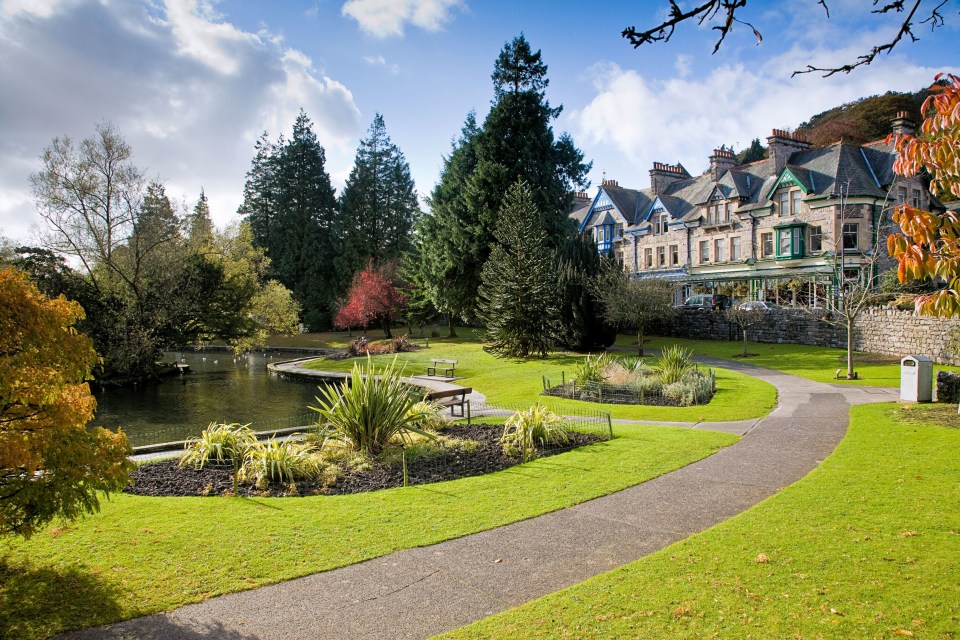
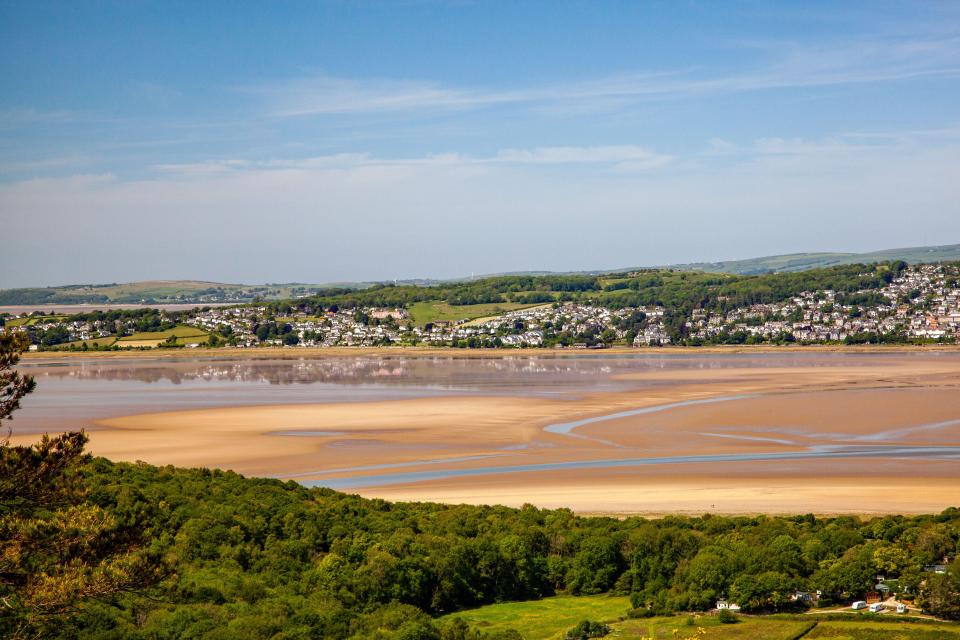
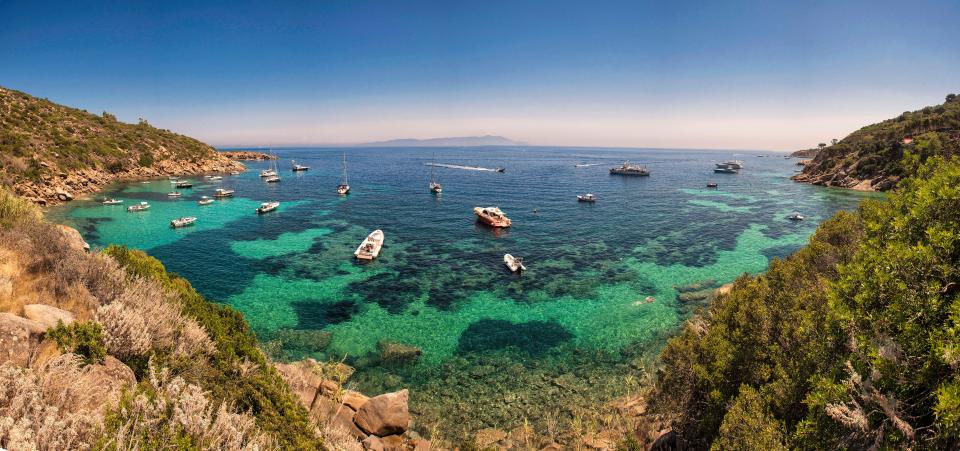
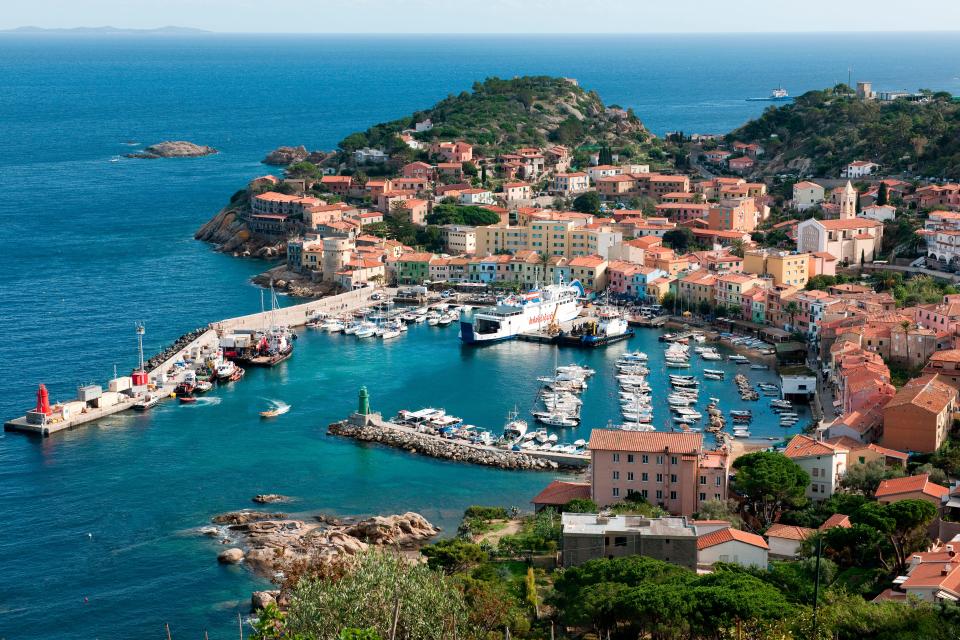
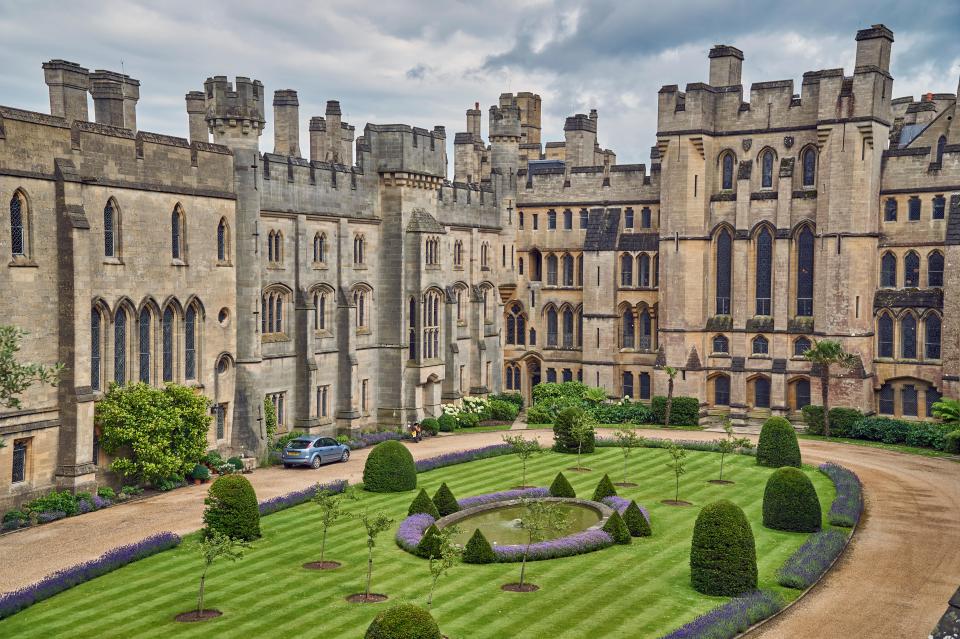
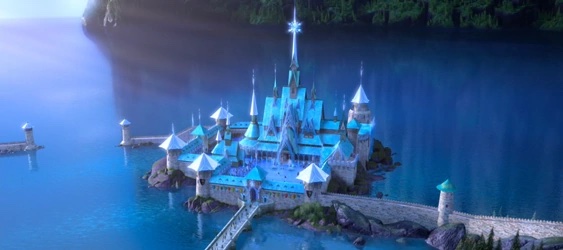
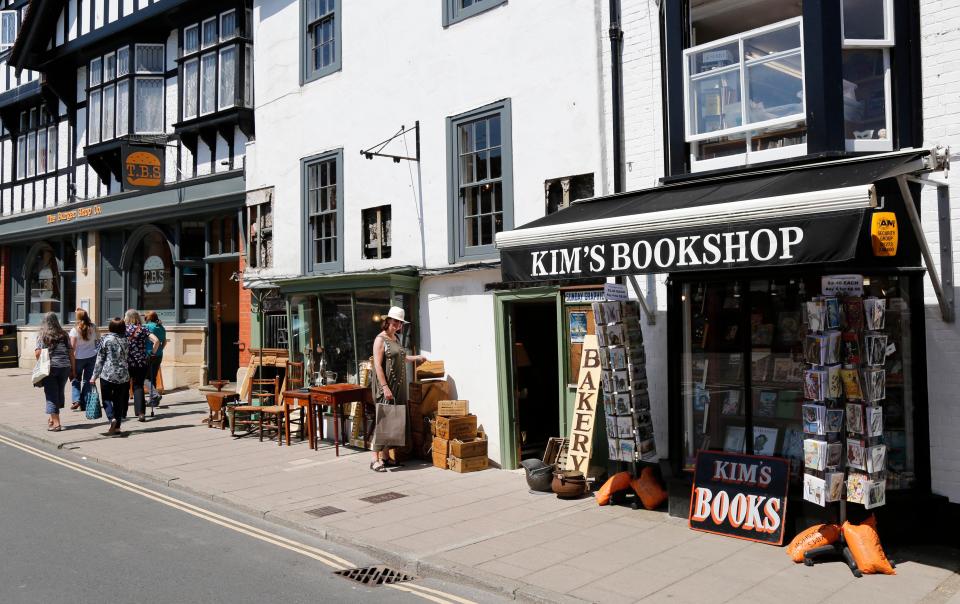
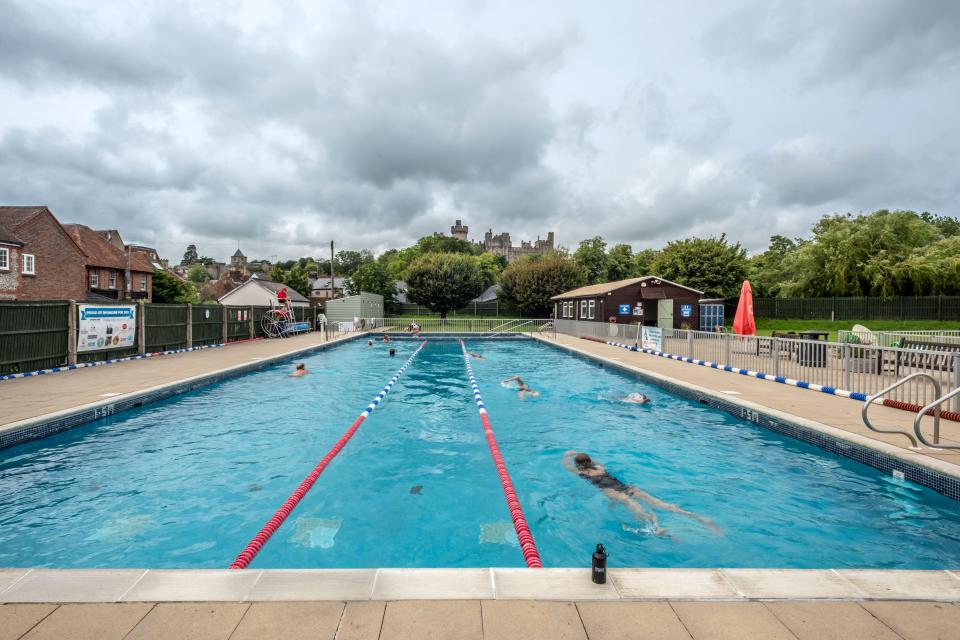
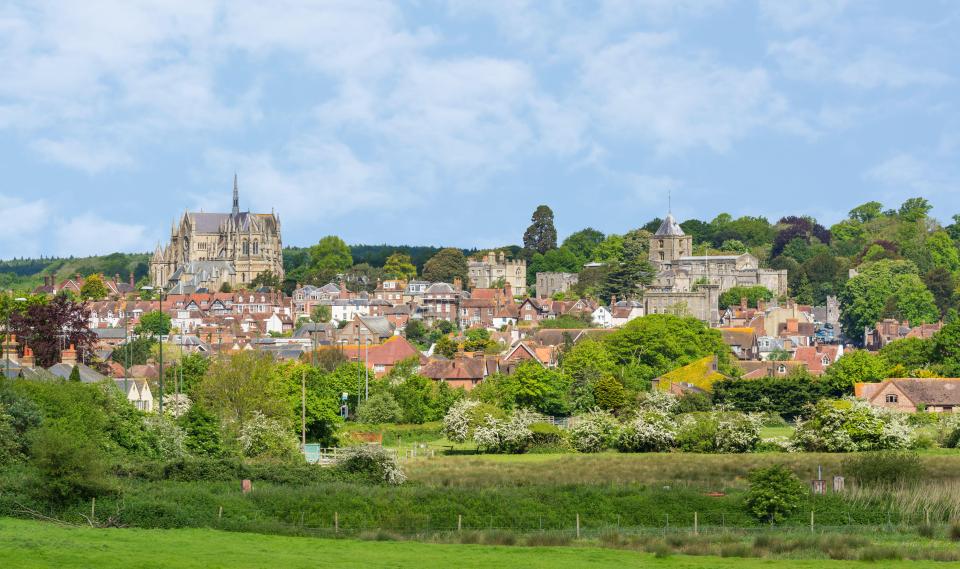


You must be logged in to post a comment Login